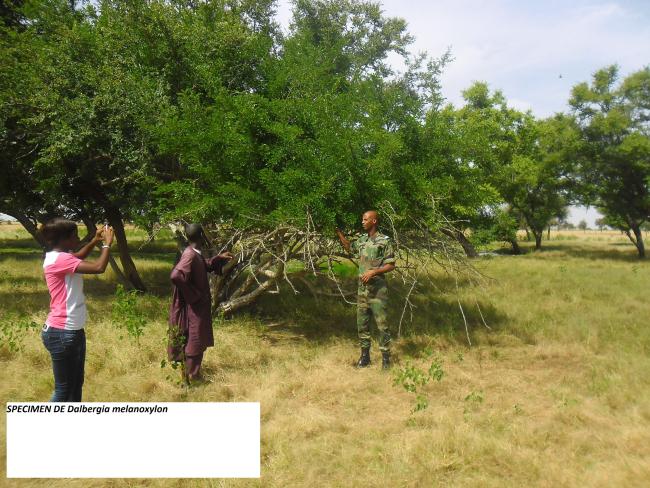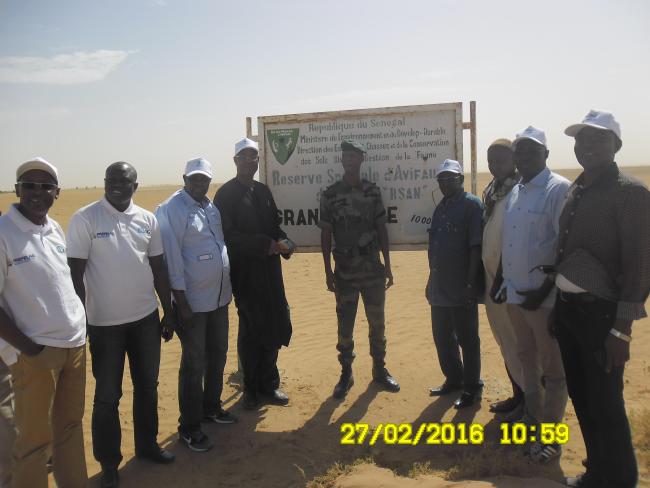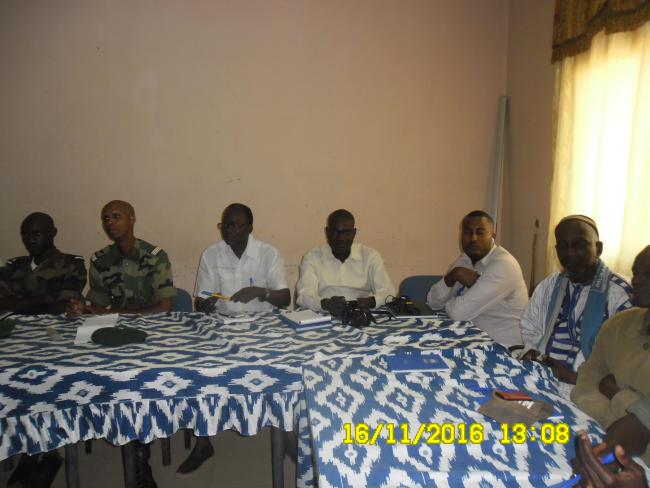Réserve Spéciale de Faune de Ndiaël
Réserve Spéciale de Faune de Ndiaël
- Country:
- Senegal
- Site number:
- 139
- Area:
- 26,000.0 ha
- Designation date:
- 11-07-1977
- Coordinates:
- 16°14'14"N 16°03'38"W
Carousel
CarouselMaterials presented on this website, particularly maps and territorial information, are as-is and as-available based on available data and do not imply the expression of any opinion whatsoever on the part of the Secretariat of the Ramsar Convention concerning the legal status of any country, territory, city or area, or of its authorities, or concerning the delimitation of its frontiers or boundaries.
The Site is an inland wetland, specifically an impervious alluvial basin, on saline soil in the floodplain of the Senegal River. It is part of the Senegal River Delta Transboundary Biosphere Reserve, and has been classified as a special wildlife reserve since 1965. The vegetation is dominated by annual grasses and Acacia species. The Site is of great conservation importance, especially for birds such as Temminck’s courser (Cursorius temminckii), squacco heron (Ardeola ralloides), black crowned crane (Balearica pavonina) and Egyptian goose (Alopochen aegyptiaca). It also hosts mammals including jackal (Canis aureus), patas monkey (Erythrocebus patas), warthog (Phacochoerus aethiopicus), spotted hyena (Crocuta crocuta) and water mongoose (Attlax paludinosus); and reptiles such as the African python (Python sebae). The wetland is also of economic, cultural, scientific and recreational value, and is vital for the wellbeing of local people, for example providing water for livestock and crops. However, it is still vulnerable to threats such as desertification, proliferation of invasive species, agricultural and forestry effluents and water abstraction. The natural hydrology of the region was transformed in the 1960s to improve conditions for agriculture, and then affected by long periods of drought. The main ecological features of the Site were degraded and the subsistence and survival of indigenous communities threatened. A management plan is now being implemented to restore the hydrological and ecological characteristics of the Ndiaël to maintain its function for local communities and wildlife.
- special wildlife reserve - Réserve Spéciale de Faune de Ndiaël
- SN139RIS_1809_fr.pdf
- SN139RISformer.pdf
- SN139RISformer_160922.pdf
- SN139_map171129.jpg
- SN139_taxo161018.docx
- SN139_taxo161027.pdf













